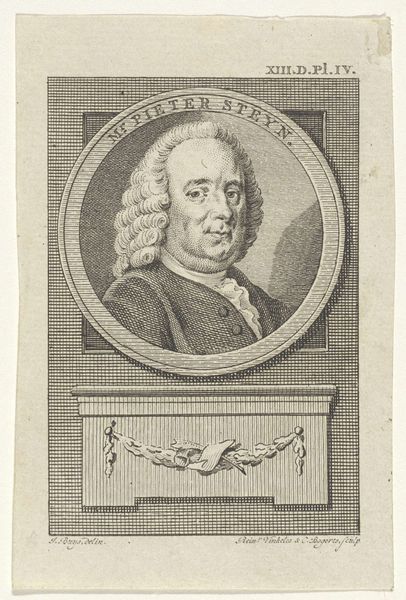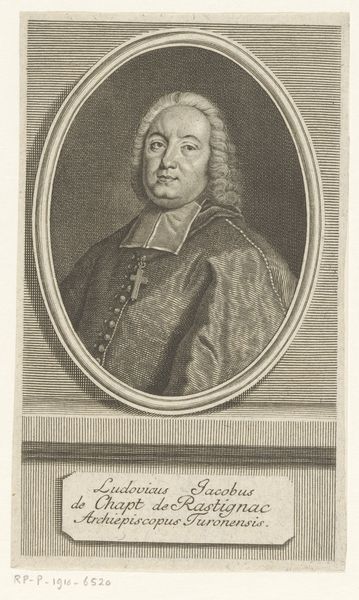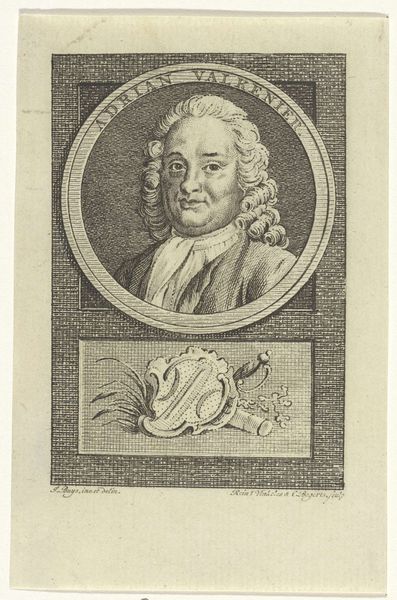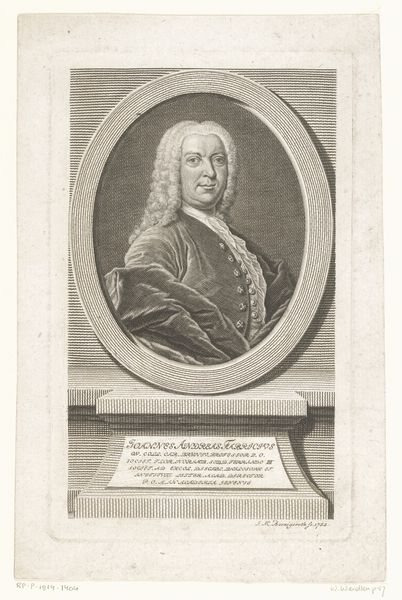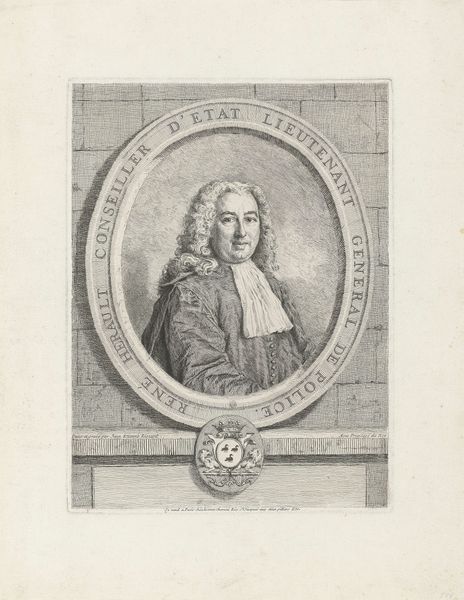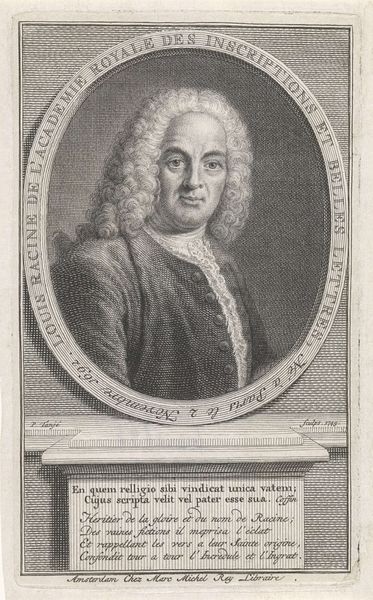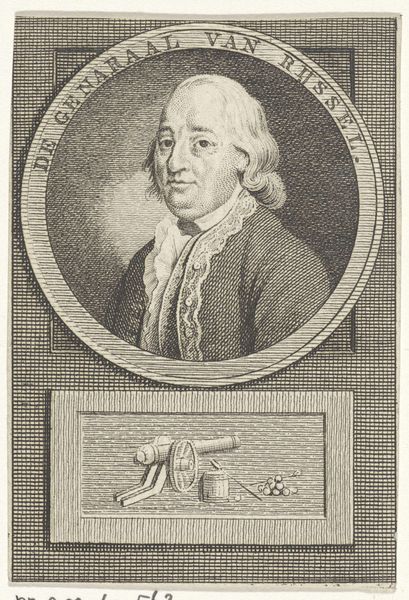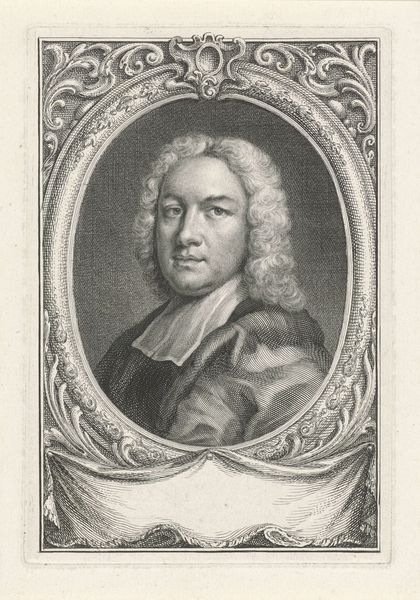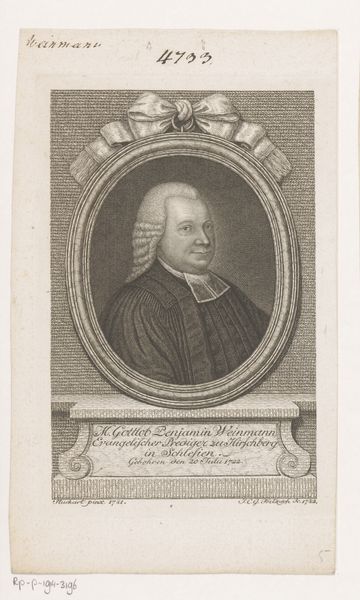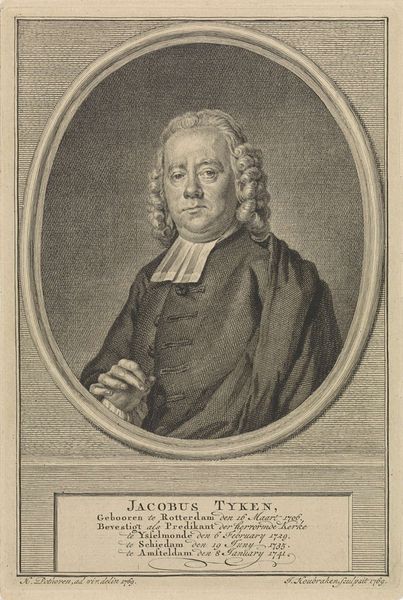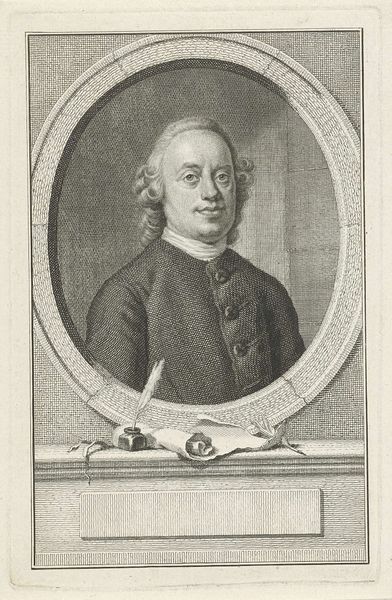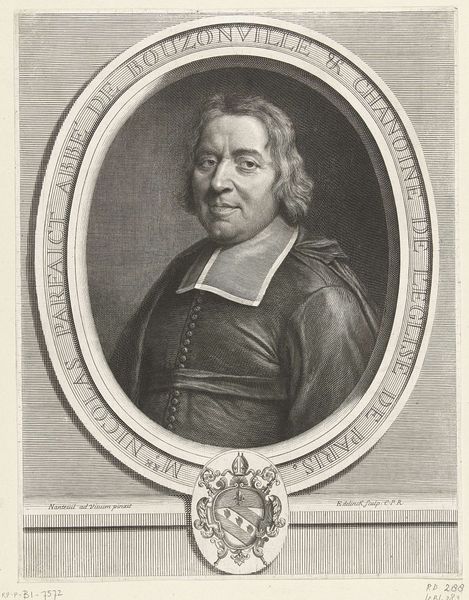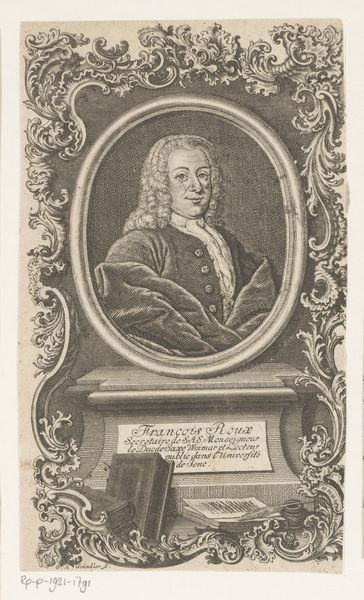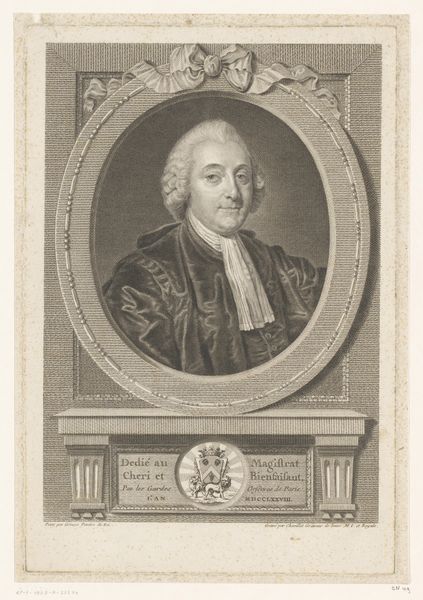
Dimensions: height 112 mm, width 80 mm
Copyright: Rijks Museum: Open Domain
Curator: This is a portrait of Jacob Gilles, a print made between 1783 and 1795 by Reinier Vinkeles. What strikes you first? Editor: There’s a certain austerity here, wouldn't you agree? The framing, the almost bureaucratic lettering at the top. Even the garland below seems restrained, not exuberant. Curator: Interesting observation! Let's consider that the work itself is an engraving, a meticulous, labor-intensive process involving metal plates and specialized tools. How does that contribute to the "feel" you describe? Editor: It gives it weight. The tight lines and considered details definitely portray him as an established figure of power, and suggest respect for lineage through visual emblems. Notice the inclusion of symbolic leaves which may reference achievements, virtue and memory, something classical. Curator: Yes, classical influence is evident, particularly in the architectural frame surrounding the portrait. Also the use of line and cross-hatching tells us something of its age – the techniques here represent a kind of industrial process which facilitated accessible dissemination during this period. What about Gilles himself? Any thoughts on his depiction? Editor: Well, look at his confident gaze. It implies experience. The circle framing the head is symbolic, connoting wisdom or wholeness. These Baroque touches emphasize the subject's status, giving a visual language to his position as a "Raadpensionaris". It definitely says, "This man is important." Curator: And the fact that this image exists as a multiple, a print, makes this “importance” democratized through its wide availability. One copy for many! That this can be viewed again and again changes both the physical lifespan of the work and also the intellectual one. Editor: That’s a wonderful perspective. So, as we consider the layering of visual symbols together with the process and intention, a narrative is really built, layering artifice on top of the real person, adding more weight through symbolic depiction. Curator: Precisely. Examining artistic output using production processes and iconic language highlights the interwoven relationships between material and cultural history. Editor: Yes, seeing art history as material evidence, overlaid with layers of visual meaning opens up wonderful areas of study!
Comments
No comments
Be the first to comment and join the conversation on the ultimate creative platform.
